19. A Significant Journey
Matt Black, (Taken from sketchbook page), Pencil on paper, 2015
If the ‘web’ of the world were not fundamentally of the same nature as that of the soul, every individual would be imprisoned in his own dream – which is absurd. (Burckhardt, 1967)
Time has slipped by and for quite some time I feel like I have been consumed by research and essay writing. There are worse ways to pass the time, but it is good to finally be exhaling once again after inhaling so much information.
It is necessary here to reflect on the process of writing the essay: Blurring the Line: Examining the Significance of Interference. If I had the time or inclination I feel that a few charts and graphs peppered throughout would provide clarification of my journey, but I have neither, so words will have to suffice. I shall paste the Abstract for the essay at the end of this blog, but not the essay itself, which at this stage is still in need of some minor repair. I am happy to upload or email to those who are interested once ready.
The reason that I feel this is necessary is because throughout this time period my research/essay was feeding my artwork and vise versa. It was around the time that I started researching for the essay that I moved from working from old personal photos, video still etc. to digital imagery taken from social media. The core of my research was a dialogue between analogue and digital with an almost bombastic notion that the properties and qualities of analogue (tactile, physical, surface, presence, chance…) were being lost to digital (Static, detachment, order, synthetic, inauthentic, loss of form…).
The environment that man creates becomes his medium for defining his role in it. (McLuhan, 1996)
After reading McLuhan’s The Medium is the Message, first published in the 1960’s, many of my concerns began to take shape – namely that human beings are in a transitional stage that includes the process of succumbing to digital technology and ultimately taking on properties of the digital object.
Are we living in a digital universe?
After reading McLuhan’s The Medium is the Message, first published in the 1960’s, many of my concerns began to take shape – namely that human beings are in the process of succumbing to digital technology and ultimately taking on the properties of the digital object. Are we becoming digital and could the universe itself be digital?
These thoughts were then reflected back as I viewed the drawings of Michaël Borremans and Uwe Wittwer. Parallel to this I began making profound comparisons between Borremans’ work and T.S Eliot’s poem The Hollow Men (1925) and became bogged down in metaphors where ‘death’s dream kingdom’ became a portentious representation of Facebook. In my mind these pieces of art from different time periods appear to be depicting the same thing: a world populated by figures detached from reality, a time where the human condition is thrown into question and progress is revealed as an illusion.
Michaël Borremans, A Mae West Experience, pencil,
watercolour and white ink on paper, 2002
Extracts from T.S Eliot’s Hollow Men:
Our dried voices, when
We whisper together
Are quiet and meaningless
——————————–
Shape without form, shade without colour,
Paralysed force, gesture without motion…
——————————–
Such deliberate disguises
———————————
In this valley of dying stars
In this hollow valley
This broken jaw of our lost kingdoms
——————————–
In this last of meeting places
We grope together
And avoid speech
These works speak to each other across the ages, revealing potent metaphors which I believe can be interpreted as reflections of the various states of the human condition as we journey through the digital age towards a post-human, post-physical world.
A synthetic past reconstructed from the limited information digital memory has stored about it, an utterly skewed patchwork devoid of time and open to manipulation in both what it contains, and what it doesn’t. (Mayer-Schonberger, 2009)
The trouble is that when you are in the midst of researching for an essay, everything has the potential to be relevant, because everything is relevant, because everything is connected. So whilst I fed my beliefs of an impending digital apocalypse, reading authors: Lev Manovich, Sherry Turkle, Mayer-Schonberger and more McLuhan, I spiraled into many tangents and became quite dizzy. The time came to hone and hone some more.
By refining I suddenly found myself stumbling over the same recurring idea: Interference as an external force. It was as though I had come full circle (recall the distorted video tapes in Blog 13 where time had appeared to reveal ‘truer picture’) and the circle was brimming full of a pulsing plethora of theories and information and I needed the cream to float to the top.
I now look back through my work and understand that interference has played a part for many years. I consider that this could have arisen from my early infatuation with the work of Francis Bacon. I felt it strange that I had never noticed this before.
Borremans and the ideas that I’d built up around his work , I moved back to Doig and Uwe Wittwer as part of my investigation as to what these layers of interference could mean in the digital age.
Uwe Wittwer, Three Sisters, 2009.
Inkjet, 150 × 180 cm
Peter Doig, Reflection (what does your soul look like), 1996.
Oil on canvas, 295×200 cm.
New Work (2015-16)…
Whilst producing the charcoal drawings (shown in previous blog) I began to question the authenticity of the original source material, feeling that my drawings had revealed a new kind of ‘truth’. This was particularly so with images that were either distorted, blurred or corrupted in some way. The notions of time, history and serendipity began to intrigue me, as an external force around the source material and as part of the drawing process.
I began to consider the image as a document of memory, truth and time. This led me to think about how we use images today; especially in the arena of social media which becomes a platform for individuals to make their lives and memories public. These are images that are up there (and out there) indefinitely – in some cases: even once you are gone: A kind of memorial of shared memories. How much do these images define us? What will be left when we’re gone?
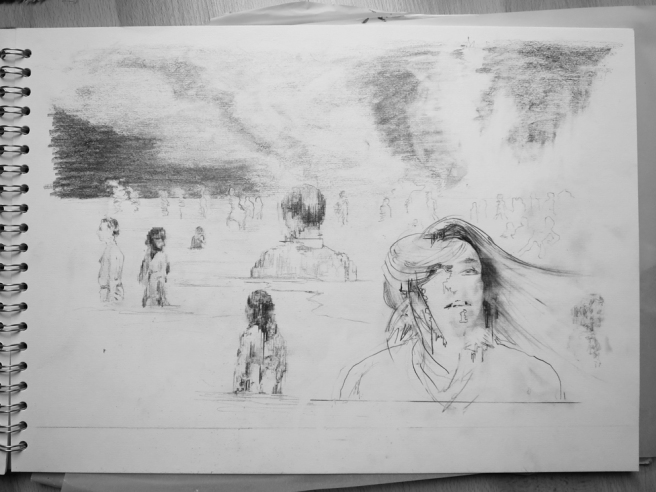
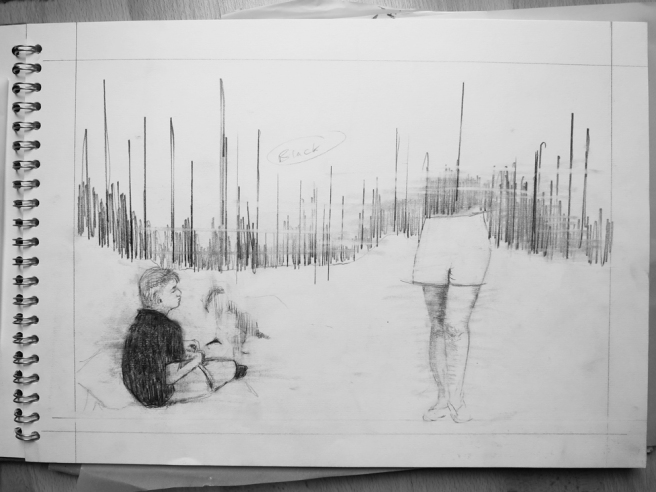 Matt Black, (Taken from sketchbook pages), Pencil on paper, 2015
Matt Black, (Taken from sketchbook pages), Pencil on paper, 2015
They’re curating their lives. So their social media presence, which all but ceases to exist. (Sorkin, 2016)
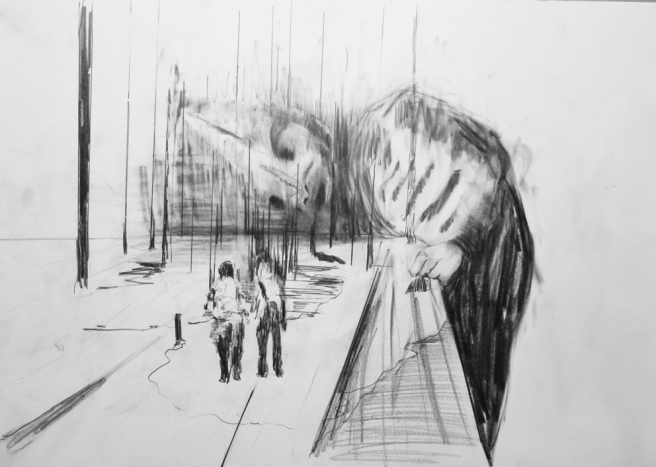 Matt Black, Untitled, Pencil and graphite on card, 2015
Matt Black, Untitled, Pencil and graphite on card, 2015
Matt Black, Untitled, Pencil, graphite, acrylic paint, Graph paper scroll, 2015
As mentioned previously, the decision arose to move from personal to public – from analogue to digital imagery taken from social media. By doing this I began subjecting the digital image to a wholly analogue influence, bringing it back into the realm of the material and physical, that which is. I had now become the external interference: creating, manipulating and subverting in real time and space. The image is appropriated, reinvented, reinvigorated – but it is often fragile, without substance, fragmented, almost transparent in some cases, as it feels a pull to its origin (Death’s Kingdom). An ongoing conflict between analogue and digital creates this push and pull between what is and what was, between life and death.
….More thoughts on this:
How quickly Bowie became a ‘was’ on Wikipedia.
A photograph is a depiction of something that was.
A painting or drawing – Can that be an ‘is’? Answer: Perhaps, as long as it is moveable/changeable.
A film is an impression of time. But it is a time that was.
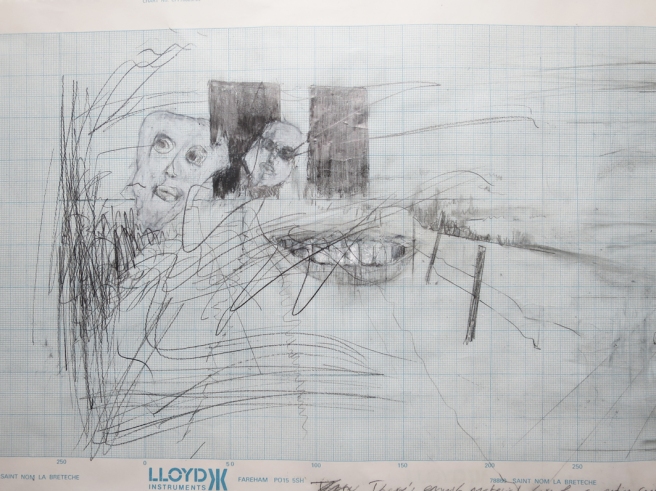
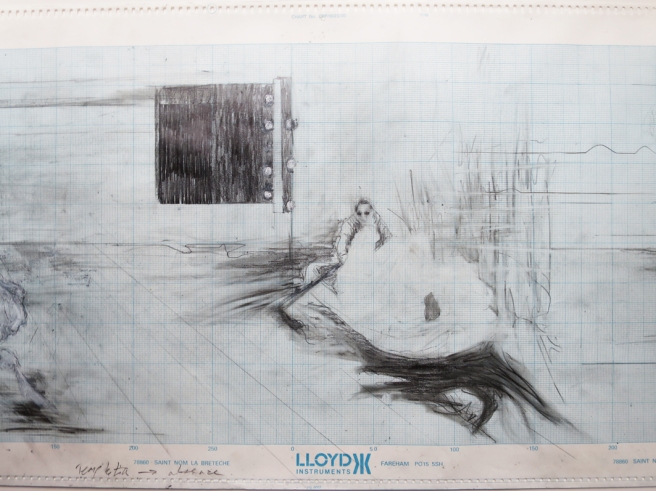
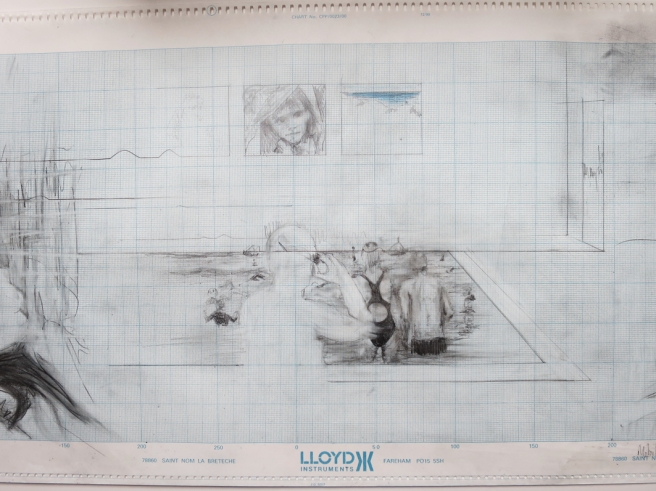
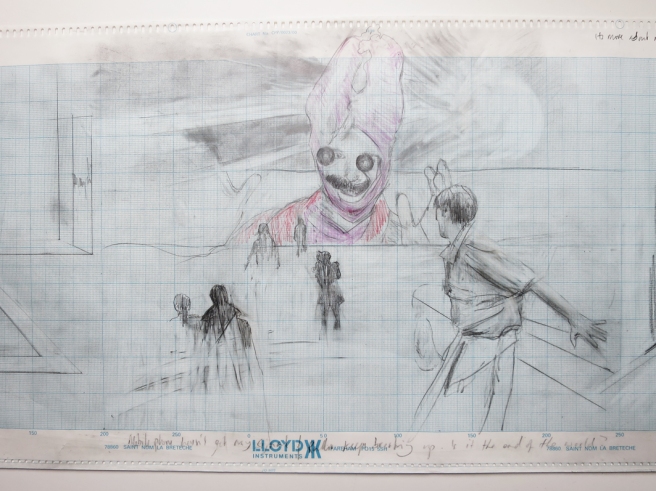
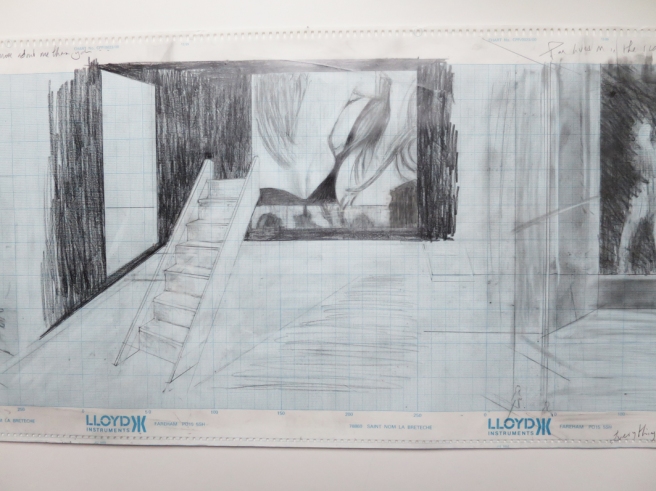 Matt Black, Untitled, Pencil and graphite, Graph paper scroll, 2015
Matt Black, Untitled, Pencil and graphite, Graph paper scroll, 2015
Throughout the creation of these latest pencil and graphite drawings a kind of narrative has inadvertently evolved – one that perhaps starts with social media and then transforms itself into something more personal. The choice of image is of interest to me here: I am never quite sure how it works or what I’m looking for. The process of searching and looking often becomes a reverie where, occasionally, an element of randomness creeps in. Although one thing is certain: I have little if any connection with these images at the outset. This can and does change though. A relationship is built up. By re-contextualizing elements, editing out and severing I begin to create scenarios that comment on death, loss and desire. It is as if a strange truth emerges through the process of drawing, one that is in opposition to the throwaway nature of the original – probably all but forgotten by its original maker.
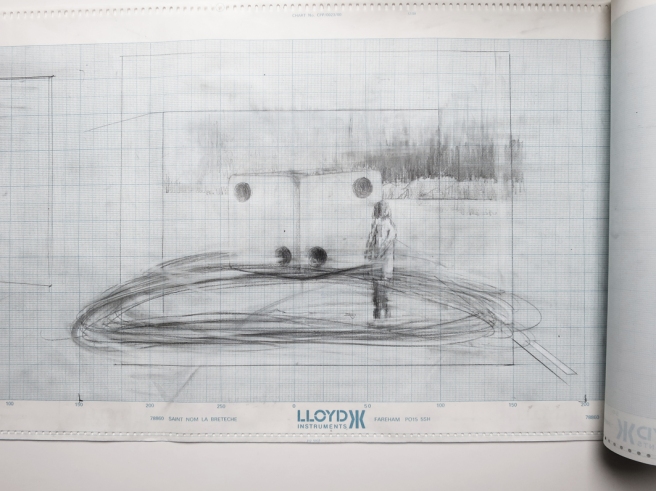 Matt Black, Untitled, Pencil and graphite, Graph paper scroll, 2015
Matt Black, Untitled, Pencil and graphite, Graph paper scroll, 2015
The Abstract for essay: Blurring the Line: Examining the Significance of Interference…
Abstract:
This essay investigates how techniques of interference employed by visual artists allow for deeper insights into the human condition. We live in a digital age where Walter Benjamin’s theories (1936) on the loss of ‘aura’ and Barthes’s disintegration of consciousness and identity (1980) resonate through and beyond the influx of digital images. As the truth of image and indeed reality is put into question amongst a mass of digital information, focus is given to contemporary artists using photographic source material as a vital part of their process. Through close investigation of art works by Peter Doig, Uwe Wittwer and Joseph Nechvatal, representation and transformation are considered both of material and consciousness. This provides theories as to how this is achieved through unique processes of interference that reveal hidden meanings and create openings within the picture plane and beyond.
References are made to the notions of analogue – with its properties related to material, surface and history, providing necessary and potent metaphors about human presence and nature.
The overriding points within the essay, those that make their way to the surface, are: time, chance and a fleeting chaos. Time and the momentary abandonment of control is vital for the nourishment of chance and serendipity – There is a need to invite a positive interference and to embrace a kind of chaos, one that accepts the process of mistakes to achieve an understanding of what it means to be human in a digital world.
References:
Burckhardt, T (1967) Alchemy: Science of the cosmos, Science of the Soul Penguin Books inc
Mayer-Schonberger, V (2009) DELETE: The Virtue of Forgetting in the Digital Age Princeto University Press
McLuhan, M & Fiore, Q (1996) The Medium is the Massage Penguin
Manovich, L (2001) The Language of New Media MIT PRESS
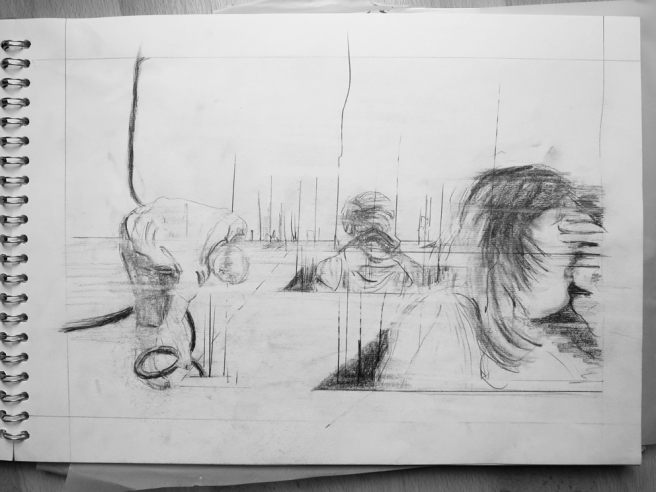




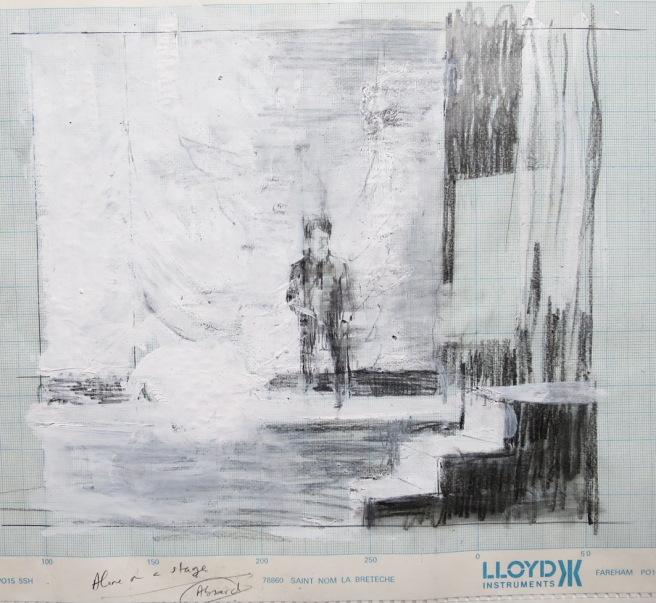
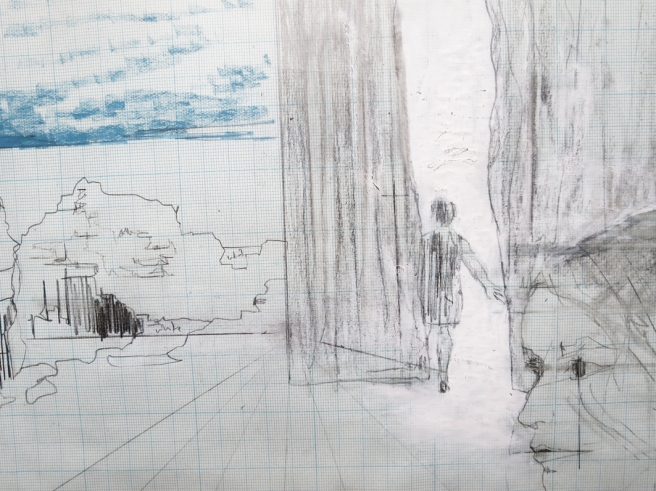
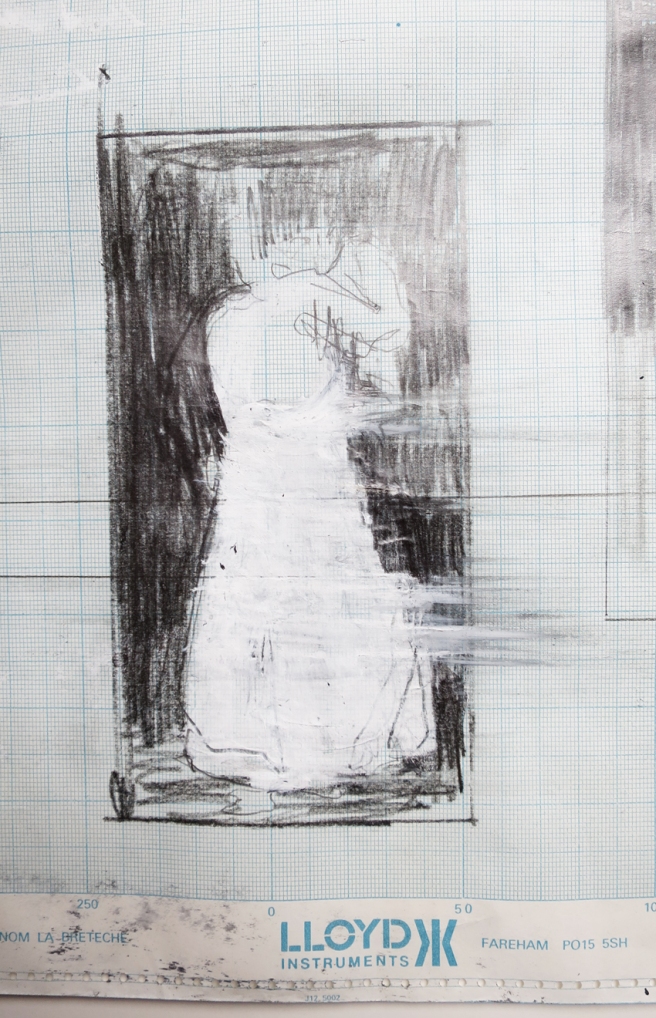
Leave a Reply